Of all the years I’ve had, this has certainly been one of them!
This is a near-complete list of my publicly available creations, all built during lockdown.
I created something new every week since March, so I’m hoping these will bring some good memories to look back upon, and not just the list of everything I’ve lost. Details of the talks I gave can be found on the Steven Goodwin speaker page.LEGO : 8 models and videos
Magic : 5 tricks and routines
Music : 6 musical items
Software : 4 blocks of code
Making : 4 things I made
For more models, please visit my LEGO page
Adam - The SkeletonVote on LEGO projects |
The curved nature of the human skeleton is a tricky thing to build with square blocks, but I had a go!
|
Vote on LEGO projects |
Tutankhamun's TombVote on LEGO projects |
Build to celebrate the 100th anniversary of the tomb's discovery in 1921, this was the first
design I tried to convince LEGO to make into a genuine set.
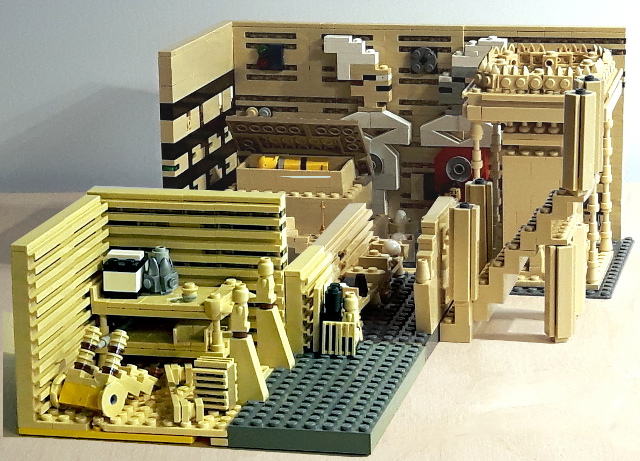
|
Background notes Vote on LEGO projects |
MondrianBackground notes |
Mondrian Jr discovers the four colour problem...
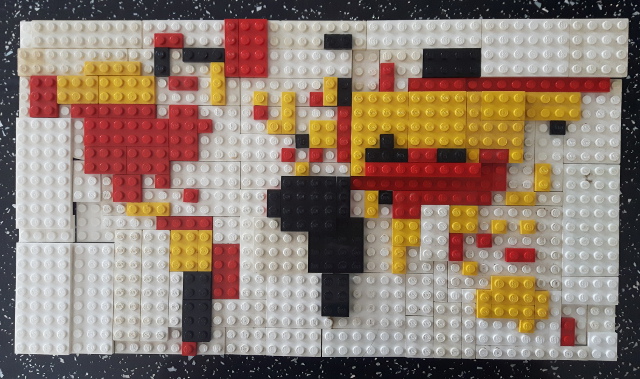
|
Background notes |
8852 - RobotBackground notesWatch on YouTube |
Rebuilding the first robotic LEGO set, without having the original set

|
Background notes |
Interactive BandBackground notesWatch on YouTube |
Move the minifigs and watch the band play music

|
Background notes |
Space SystemWatch on YouTube (part 1)Watch on YouTube (part 2) Background notes |
Two stop-motion videos of the first space system sets being built, each with a self-composed soundtrack.
|
Background notes |
LEGO - Coding for kidsWatch on YouTube |
This is a demo on how LEGO and RFID can be used to help teach coding. | |
The best way to sort LEGOFull article |
Conventional wisdom dictates that LEGO should be sorted according to their colours. After all, this is how the LEGO company sort their blocks on the pick-a-brick wall. But, I offer that it is the very worst way of organising them, and this blog page attempts describes a better method...
|
SOL - Full article on the best way to sort LEGO |
My last gig in 2020 was at the Magicians Showcase, one of my favourite venues. Not only did lockdown stop the event, but the theatre was also sold in the same month! So naturally, most of my magic has been either theoretical, or for online audiences. Neither has the buzz of a sell-out 220-seat theatre.
PK magicWatch on YouTube |
What items bend and twist, using only the power of my mind! | |
Ball and tubeWatch on YouTube |
The tube is only wide enough to allow one ball to pass. Yet two do. | |
Cut the cardsWatch on YouTube |
A new take, on an old trick... | |
Summers Edge |
An award-winning invention where the names of two freely-selected cards are found written on the deck itself. | Secret! |
Pentacle TV |
An amazing routine using a mobile phone. Alas, I can't talk more about it... | Secret! |
Kraftwerk 0.1Watch on YouTube |
Using 5 Arduinos to play 1 song.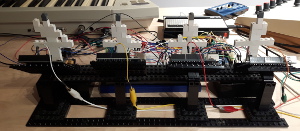
|
Background notes Hackaday Article |
Inspiration in IsolationHear it |
I wrote an album of songs, with the intention of the lyrics never mentioning
the words 'lockdown', 'isolation' or 'in these uncertain times'.
|
Inspiration in Isolation |
Symphony Number 1.1 in C# minorHear it |
"Symphony Number 1.1" is an opportunity to use the same generative algorithms used by one of the pieces in the original symphony, Fractal, to generate your own music.

|
Experiment with "Symphony Number 1.1" |
Golomb ruler - part 2Hear it |
By applying the mathematics of a Golomb ruler I have generated this piece of algorithmic music. |
Listen to 'Golomb ruler - part 2' here |
Windswept No. 3Hear it |
When Phyllis Wager travelled to East Greenland as part of a British expedition in 1935, it was so unusual for women to travel to the Polar regions that special permission was needed from the Foreign Office. What can her typewriter tell us about her work? |
Listen to 'Windswept No. 3' here |
LiveMixUse it |
A full studio mixer in the browser
|
See the live mixer in action |
EMF - Emulator FrameworkWatch on YouTubeem.ulat.es site |
EMF stands for the emulation framework, which aims to significantly lower the barrier to entry for emulation developers, and would-be emulation developers.
It exists in two parts: the first is the EMF builder which takes an XML description of a computer system, and translates it into source code, generating an emulator, assembler, and disassembler - all from the same originating file. 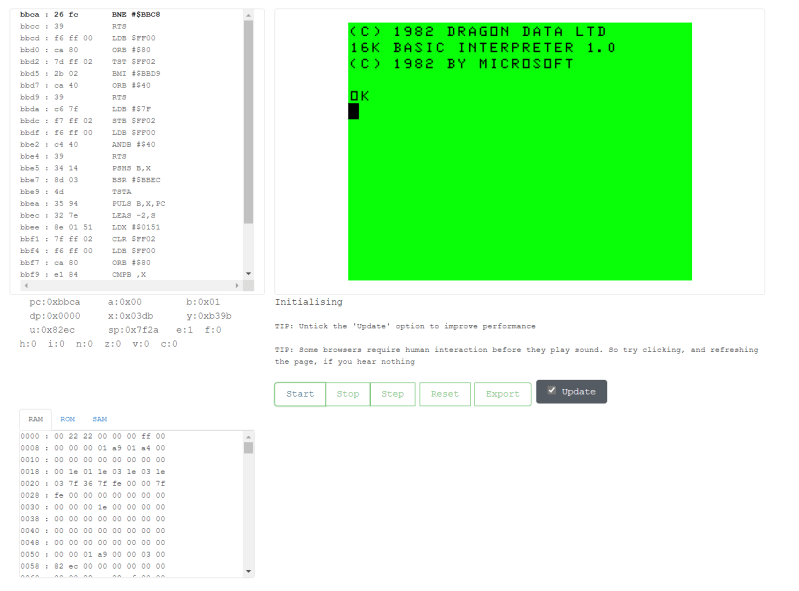
|
Hackaday Article Retro Computing Roundtable feature CocoTalk 185 discussion EMF emulator framework - em.ulat.es site |
ZX AdventureBuy it! |
I spent a lot of time writing emulators this year, so I wondered if I still knew how to code for the machines I've been emulating... So, I wrote a game for the Sinclair ZX81 in Z80 assembly It was released in 2021 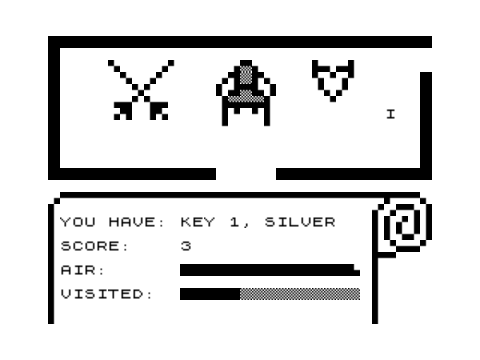
|
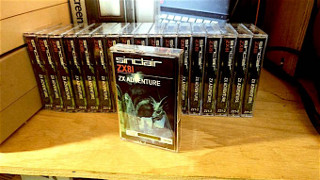 |
1K ZX Chess BotWatch on YouTube |
I tied the original 1K chess game to an emulator, and hooked it into the lichess.org API
|
Background notes |
TAD Hack |
A prize-winning hack from the foremost programmable telecoms conference. |
TAD Hack Winners |
Space PointerWatch on YouTube |
It lets you select a planet, and time of day, and the arrow will spin around to point to its position in the sky.
|
Space Pointer - Instructions |
Spin Table |
I've sometimes seen nice image previews that let you rotate your view camera around a particular object, giving you a real 3D feel,
so I built a table that spins around so that you can make your own.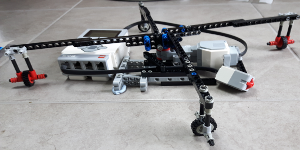
|
Full details and examples |
Chess Art |
Here, by way of a distraction, is the Z80 assembly source code to ChesSkelet which builds down into just 377 bytes. (Yes, that's smaller than the infamous ZX81 1K chess program!) I built a complete set of these! 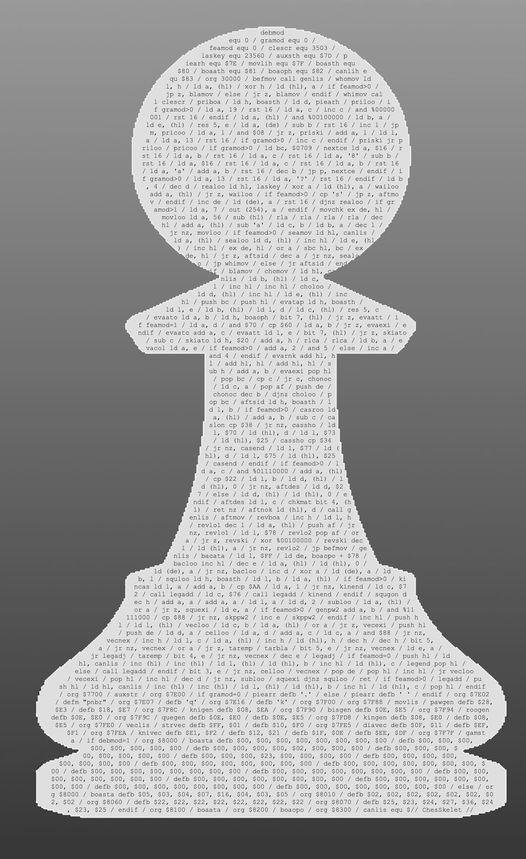
| TBA |
Art |
Vitruvius 2.0 - This is a piece I created for Cambridge Museums' "Woven Histories" exhibition. It's not the best work in the project - it is billed only as "The best of the rest" - but, as a failed artist, that's good enough for me!
|
Woven Histories |